Determine if a linear transformation is onto or one to one. First, lets just think about it. The linear span (or just span) of a set of vectors in a vector space is the intersection of all subspaces containing that set. Equivalently, if \(T\left( \vec{x}_1 \right) =T\left( \vec{x}_2\right) ,\) then \(\vec{x}_1 = \vec{x}_2\). CLAPACK is the library which uder the hood uses very high-performance BLAS library, as do other libraries, like ATLAS. Intro to linear equation standard form | Algebra (video) | Khan Academy One can probably see that free and independent are relatively synonymous. Points in \(\mathbb{R}^3\) will be determined by three coordinates, often written \(\left(x,y,z\right)\) which correspond to the \(x\), \(y\), and \(z\) axes. By Proposition \(\PageIndex{1}\), \(A\) is one to one, and so \(T\) is also one to one. If you're behind a web filter, please make sure that the domains *.kastatic.org and *.kasandbox.org are unblocked. It is common to write \(T\mathbb{R}^{n}\), \(T\left( \mathbb{R}^{n}\right)\), or \(\mathrm{Im}\left( T\right)\) to denote these vectors. Rank is thus a measure of the "nondegenerateness" of the system of linear equations and linear transformation . Definition 5.1.3: finite-dimensional and Infinite-dimensional vector spaces. Here are the questions: a) For all square matrices A, det(2A)=2det(A). The LibreTexts libraries arePowered by NICE CXone Expertand are supported by the Department of Education Open Textbook Pilot Project, the UC Davis Office of the Provost, the UC Davis Library, the California State University Affordable Learning Solutions Program, and Merlot. The complex numbers are both a real and complex vector space; we have = and = So the dimension depends on the base field. We answer this question by forming the augmented matrix and starting the process of putting it into reduced row echelon form. The notation "2S" is read "element of S." For example, consider a vector that has three components: ~v= (v 1;v 2;v 1. Let \(\mathbb{R}^{n} = \left\{ \left( x_{1}, \cdots, x_{n}\right) :x_{j}\in \mathbb{R}\text{ for }j=1,\cdots ,n\right\} .\) Then, \[\vec{x} = \left [ \begin{array}{c} x_{1} \\ \vdots \\ x_{n} \end{array} \right ]\nonumber \] is called a vector. By definition, \[\ker(S)=\{ax^2+bx+c\in \mathbb{P}_2 ~|~ a+b=0, a+c=0, b-c=0, b+c=0\}.\nonumber \]. Let \(V\) be a vector space of dimension \(n\) and let \(W\) be a subspace. Then in fact, both \(\mathrm{im}\left( T\right)\) and \(\ker \left( T\right)\) are subspaces of \(W\) and \(V\) respectively. By Proposition \(\PageIndex{1}\) it is enough to show that \(A\vec{x}=0\) implies \(\vec{x}=0\). We have a leading 1 in the last column, so therefore the system is inconsistent. Precisely, \[\begin{array}{c} \vec{u}=\vec{v} \; \mbox{if and only if}\\ u_{j}=v_{j} \; \mbox{for all}\; j=1,\cdots ,n \end{array}\nonumber \] Thus \(\left [ \begin{array}{rrr} 1 & 2 & 4 \end{array} \right ]^T \in \mathbb{R}^{3}\) and \(\left [ \begin{array}{rrr} 2 & 1 & 4 \end{array} \right ]^T \in \mathbb{R}^{3}\) but \(\left [ \begin{array}{rrr} 1 & 2 & 4 \end{array} \right ]^T \neq \left [ \begin{array}{rrr} 2 & 1 & 4 \end{array} \right ]^T\) because, even though the same numbers are involved, the order of the numbers is different. The only vector space with dimension is {}, the vector space consisting only of its zero element.. Properties. To express where it is in 3 dimensions, you would need a minimum, basis, of 3 independently linear vectors, span (V1,V2,V3). For the specific case of \(\mathbb{R}^3\), there are three special vectors which we often use. \end{aligned}\end{align} \nonumber \], \[\begin{align}\begin{aligned} x_1 &= 3-2\pi\\ x_2 &=5-4\pi \\ x_3 &= e^2 \\ x_4 &= \pi. We can picture that perhaps all three lines would meet at one point, giving exactly 1 solution; perhaps all three equations describe the same line, giving an infinite number of solutions; perhaps we have different lines, but they do not all meet at the same point, giving no solution. Let \(\vec{z}\in \mathbb{R}^m\). Note that this proposition says that if \(A=\left [ \begin{array}{ccc} A_{1} & \cdots & A_{n} \end{array} \right ]\) then \(A\) is one to one if and only if whenever \[0 = \sum_{k=1}^{n}c_{k}A_{k}\nonumber \] it follows that each scalar \(c_{k}=0\). These notations may be used interchangeably. Therefore, we have shown that for any \(a, b\), there is a \(\left [ \begin{array}{c} x \\ y \end{array} \right ]\) such that \(T\left [ \begin{array}{c} x \\ y \end{array} \right ] =\left [ \begin{array}{c} a \\ b \end{array} \right ]\). We can also determine the position vector from \(P\) to \(Q\) (also called the vector from \(P\) to \(Q\)) defined as follows. Consider Example \(\PageIndex{2}\). We formally define this and a few other terms in this following definition. Consider a linear system of equations with infinite solutions. \[\left[\begin{array}{ccc}{1}&{1}&{1}\\{2}&{2}&{2}\end{array}\right]\qquad\overrightarrow{\text{rref}}\qquad\left[\begin{array}{ccc}{1}&{1}&{1}\\{0}&{0}&{0}\end{array}\right] \nonumber \], Now convert the reduced matrix back into equations. Accessibility StatementFor more information contact us atinfo@libretexts.org. Returning to the original system, this says that if, \[\left [ \begin{array}{cc} 1 & 1 \\ 1 & 2\\ \end{array} \right ] \left [ \begin{array}{c} x\\ y \end{array} \right ] = \left [ \begin{array}{c} 0 \\ 0 \end{array} \right ]\nonumber \], then \[\left [ \begin{array}{c} x \\ y \end{array} \right ] = \left [ \begin{array}{c} 0 \\ 0 \end{array} \right ]\nonumber \]. Take any linear combination c 1 sin ( t) + c 2 cos ( t), assume that the c i (atleast one of which is non-zero) exist such that it is zero for all t, and derive a contradiction. Suppose \(A = \left [ \begin{array}{cc} a & b \\ c & d \end{array} \right ]\) is such a matrix. However, if \(k=6\), then our last row is \([0\ 0\ 1]\), meaning we have no solution. Answer by ntnk (54) ( Show Source ): You can put this solution on YOUR website! This page titled 1.4: Existence and Uniqueness of Solutions is shared under a CC BY-NC 3.0 license and was authored, remixed, and/or curated by Gregory Hartman et al. Discuss it. 7. Now, imagine taking a vector in \(\mathbb{R}^n\) and moving it around, always keeping it pointing in the same direction as shown in the following picture. Obviously, this is not true; we have reached a contradiction. A special case was done earlier in the context of matrices. \[\left[\begin{array}{ccc}{1}&{2}&{3}\\{3}&{k}&{9}\end{array}\right]\qquad\overrightarrow{-3R_{1}+R_{2}\to R_{2}}\qquad\left[\begin{array}{ccc}{1}&{2}&{3}\\{0}&{k-6}&{0}\end{array}\right] \nonumber \]. Compositions of linear transformations 1 (video) | Khan Academy Suppose first that \(T\) is one to one and consider \(T(\vec{0})\). Again, more practice is called for. By picking two values for \(x_3\), we get two particular solutions. Then. Computer programs such as Mathematica, MATLAB, Maple, and Derive can be used; many handheld calculators (such as Texas Instruments calculators) will perform these calculations very quickly. Group all constants on the right side of the inequality. In fact, with large systems, computing the reduced row echelon form by hand is effectively impossible. Above we showed that \(T\) was onto but not one to one. (lxn) matrix and (nx1) vector multiplication. Let \(P=\left( p_{1},\cdots ,p_{n}\right)\) be the coordinates of a point in \(\mathbb{R}^{n}.\) Then the vector \(\overrightarrow{0P}\) with its tail at \(0=\left( 0,\cdots ,0\right)\) and its tip at \(P\) is called the position vector of the point \(P\). A vector ~v2Rnis an n-tuple of real numbers. Hence \(S \circ T\) is one to one. The vectors \(v_1=(1,1,0)\) and \(v_2=(1,-1,0)\) span a subspace of \(\mathbb{R}^3\). Lets try another example, one that uses more variables. Let \(A\) be an \(m\times n\) matrix where \(A_{1},\cdots , A_{n}\) denote the columns of \(A.\) Then, for a vector \(\vec{x}=\left [ \begin{array}{c} x_{1} \\ \vdots \\ x_{n} \end{array} \right ]\) in \(\mathbb{R}^n\), \[A\vec{x}=\sum_{k=1}^{n}x_{k}A_{k}\nonumber \]. First here is a definition of what is meant by the image and kernel of a linear transformation. Now, consider the case of \(\mathbb{R}^n\) for \(n=1.\) Then from the definition we can identify \(\mathbb{R}\) with points in \(\mathbb{R}^{1}\) as follows: \[\mathbb{R} = \mathbb{R}^{1}= \left\{ \left( x_{1}\right) :x_{1}\in \mathbb{R} \right\}\nonumber \] Hence, \(\mathbb{R}\) is defined as the set of all real numbers and geometrically, we can describe this as all the points on a line. More succinctly, if we have a leading 1 in the last column of an augmented matrix, then the linear system has no solution. Introduction to linear independence (video) | Khan Academy The answer to this question lies with properly understanding the reduced row echelon form of a matrix. Find the position vector of a point in \(\mathbb{R}^n\). In this video I work through the following linear algebra problem: For which value of c do the following 2x2 matrices commute?A = [ -4c 2; -4 0 ], B = [ 1. For Property~3, note that a subspace \(U\) of a vector space \(V\) is closed under addition and scalar multiplication. It is also widely applied in fields like physics, chemistry, economics, psychology, and engineering. So far, whenever we have solved a system of linear equations, we have always found exactly one solution. We can essentially ignore the third row; it does not divulge any information about the solution.\(^{2}\) The first and second rows can be rewritten as the following equations: \[\begin{align}\begin{aligned} x_1 - x_2 + 2x_4 &=4 \\ x_3 - 3x_4 &= 7. We start by putting the corresponding matrix into reduced row echelon form. After moving it around, it is regarded as the same vector. We have now seen examples of consistent systems with exactly one solution and others with infinite solutions. 5.1: Linear Transformations - Mathematics LibreTexts To find the solution, put the corresponding matrix into reduced row echelon form. 5.5: One-to-One and Onto Transformations - Mathematics LibreTexts By setting \(x_2 = 1\) and \(x_4 = -5\), we have the solution \(x_1 = 15\), \(x_2 = 1\), \(x_3 = -8\), \(x_4 = -5\). It follows that \(T\) is not one to one. From Proposition \(\PageIndex{1}\), \(\mathrm{im}\left( T\right)\) is a subspace of \(W.\) By Theorem 9.4.8, there exists a basis for \(\mathrm{im}\left( T\right) ,\left\{ T(\vec{v}_{1}),\cdots ,T(\vec{v}_{r})\right\} .\) Similarly, there is a basis for \(\ker \left( T\right) ,\left\{ \vec{u} _{1},\cdots ,\vec{u}_{s}\right\}\). Now, consider the case of Rn . If a consistent linear system of equations has a free variable, it has infinite solutions. We can verify that this system has no solution in two ways. This notation will be used throughout this chapter. Then T is a linear transformation. The third component determines the height above or below the plane, depending on whether this number is positive or negative, and all together this determines a point in space. They are given by \[\vec{i} = \left [ \begin{array}{rrr} 1 & 0 & 0 \end{array} \right ]^T\nonumber \] \[\vec{j} = \left [ \begin{array}{rrr} 0 & 1 & 0 \end{array} \right ]^T\nonumber \] \[\vec{k} = \left [ \begin{array}{rrr} 0 & 0 & 1 \end{array} \right ]^T\nonumber \] We can write any vector \(\vec{u} = \left [ \begin{array}{rrr} u_1 & u_2 & u_3 \end{array} \right ]^T\) as a linear combination of these vectors, written as \(\vec{u} = u_1 \vec{i} + u_2 \vec{j} + u_3 \vec{k}\). INTRODUCTION Linear algebra is the math of vectors and matrices. We can tell if a linear system implies this by putting its corresponding augmented matrix into reduced row echelon form. In the previous section, we learned how to find the reduced row echelon form of a matrix using Gaussian elimination by hand. Putting the augmented matrix in reduced row-echelon form: \[\left [\begin{array}{rrr|c} 1 & 1 & 0 & 0 \\ 1 & 0 & 1 & 0 \\ 0 & 1 & -1 & 0 \\ 0 & 1 & 1 & 0 \end{array}\right ] \rightarrow \cdots \rightarrow \left [\begin{array}{ccc|c} 1 & 0 & 0 & 0 \\ 0 & 1 & 0 & 0 \\ 0 & 0 & 1 & 0 \\ 0 & 0 & 0 & 0 \end{array}\right ].\nonumber \]. In previous sections, we have written vectors as columns, or \(n \times 1\) matrices. This helps us learn not only the technique but some of its inner workings. We can then use technology once we have mastered the technique and are now learning how to use it to solve problems. Let \(S:\mathbb{P}_2\to\mathbb{M}_{22}\) be a linear transformation defined by \[S(ax^2+bx+c) = \left [\begin{array}{cc} a+b & a+c \\ b-c & b+c \end{array}\right ] \mbox{ for all } ax^2+bx+c\in \mathbb{P}_2.\nonumber \] Prove that \(S\) is one to one but not onto. Then \(T\) is one to one if and only if \(T(\vec{x}) = \vec{0}\) implies \(\vec{x}=\vec{0}\). If \(k\neq 6\), there is exactly one solution; if \(k=6\), there are infinite solutions. This gives us a new vector with dimensions (lx1). \end{aligned}\end{align} \nonumber \]. In this example, it is not possible to have no solutions. To prove that \(S \circ T\) is one to one, we need to show that if \(S(T (\vec{v})) = \vec{0}\) it follows that \(\vec{v} = \vec{0}\). \nonumber \]. We also acknowledge previous National Science Foundation support under grant numbers 1246120, 1525057, and 1413739. 3.Now multiply the resulting matrix in 2 with the vector x we want to transform. A vector space that is not finite-dimensional is called infinite-dimensional. Dimension (vector space) - Wikipedia For Property~2, note that \(0\in\Span(v_1,v_2,\ldots,v_m)\) and that \(\Span(v_1,v_2,\ldots,v_m)\) is closed under addition and scalar multiplication. A system of linear equations is consistent if it has a solution (perhaps more than one). We have been studying the solutions to linear systems mostly in an academic setting; we have been solving systems for the sake of solving systems. for a finite set of \(k\) polynomials \(p_1(z),\ldots,p_k(z)\). By convention, the degree of the zero polynomial \(p(z)=0\) is \(-\infty\). Let \(V,W\) be vector spaces and let \(T:V\rightarrow W\) be a linear transformation. There is no right way of doing this; we are free to choose whatever we wish. As we saw before, there is no restriction on what \(x_3\) must be; it is free to take on the value of any real number. via source content that was edited to the style and standards of the LibreTexts platform; a detailed edit history is available upon request. Use the kernel and image to determine if a linear transformation is one to one or onto. Once again, we get a bit of an unusual solution; while \(x_2\) is a dependent variable, it does not depend on any free variable; instead, it is always 1. \end{aligned}\end{align} \nonumber \], Find the solution to a linear system whose augmented matrix in reduced row echelon form is, \[\left[\begin{array}{ccccc}{1}&{0}&{0}&{2}&{3}\\{0}&{1}&{0}&{4}&{5}\end{array}\right] \nonumber \], Converting the two rows into equations we have \[\begin{align}\begin{aligned} x_1 + 2x_4 &= 3 \\ x_2 + 4x_4&=5.\\ \end{aligned}\end{align} \nonumber \], We see that \(x_1\) and \(x_2\) are our dependent variables, for they correspond to the leading 1s. Let \(T:\mathbb{P}_1\to\mathbb{R}\) be the linear transformation defined by \[T(p(x))=p(1)\mbox{ for all } p(x)\in \mathbb{P}_1.\nonumber \] Find the kernel and image of \(T\). First here is a definition of what is meant by the image and kernel of a linear transformation. This is the reason why it is named as a 'linear' equation. From this theorem follows the next corollary. Thus every point \(P\) in \(\mathbb{R}^{n}\) determines its position vector \(\overrightarrow{0P}\). Therefore, \(S \circ T\) is onto. Define \( \mathbb{F}_m[z] = \) set of all polynomials in \( \mathbb{F}[z] \) of degree at most m. Then \(\mathbb{F}_m[z]\subset \mathbb{F}[z]\) is a subspace since \(\mathbb{F}_m[z]\) contains the zero polynomial and is closed under addition and scalar multiplication.
Michael Taylor Mayor,
Lv Dental Supply,
Navy Region Northwest Reserve Component Command,
Advantages And Disadvantages Of Global Divide,
Articles W

















